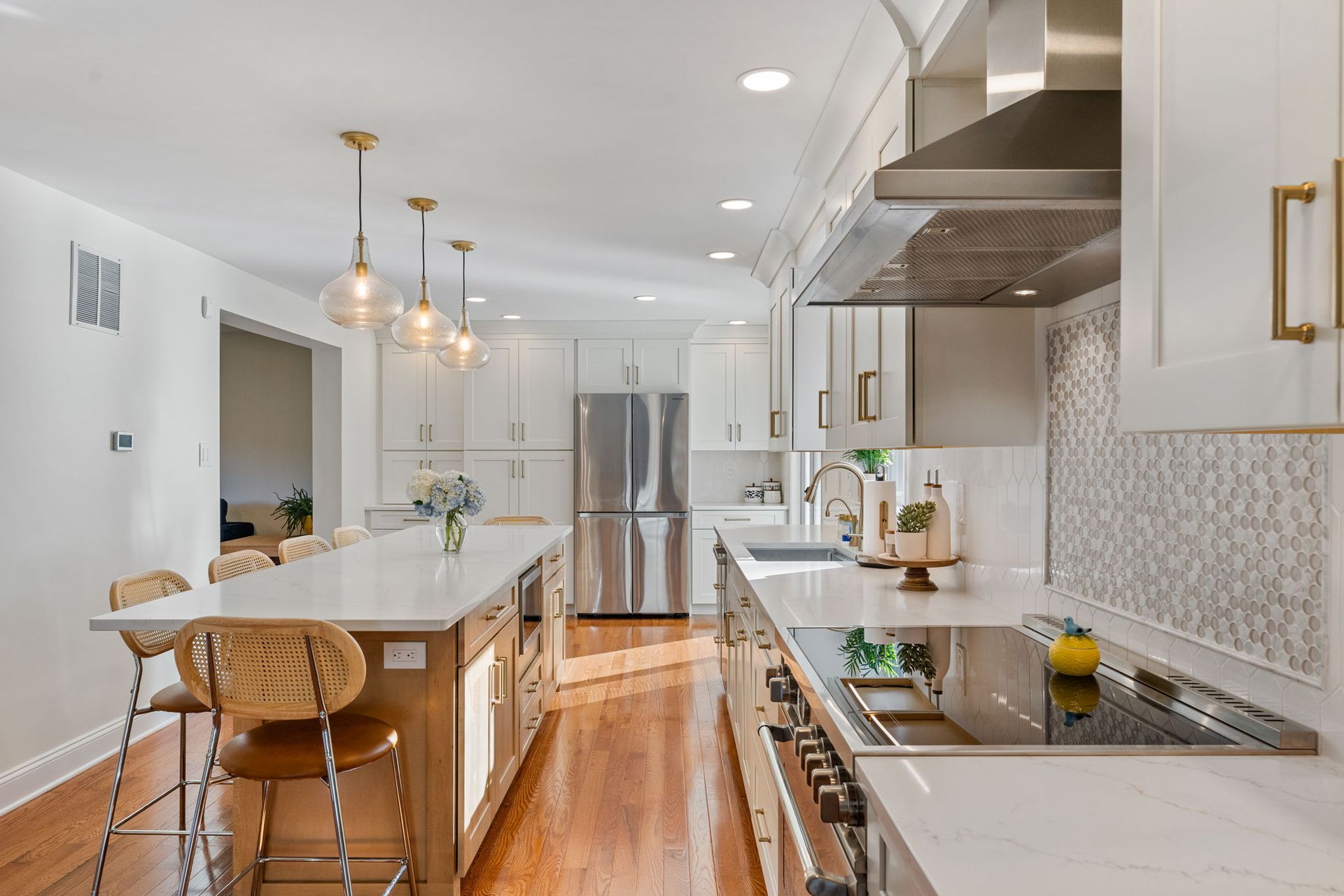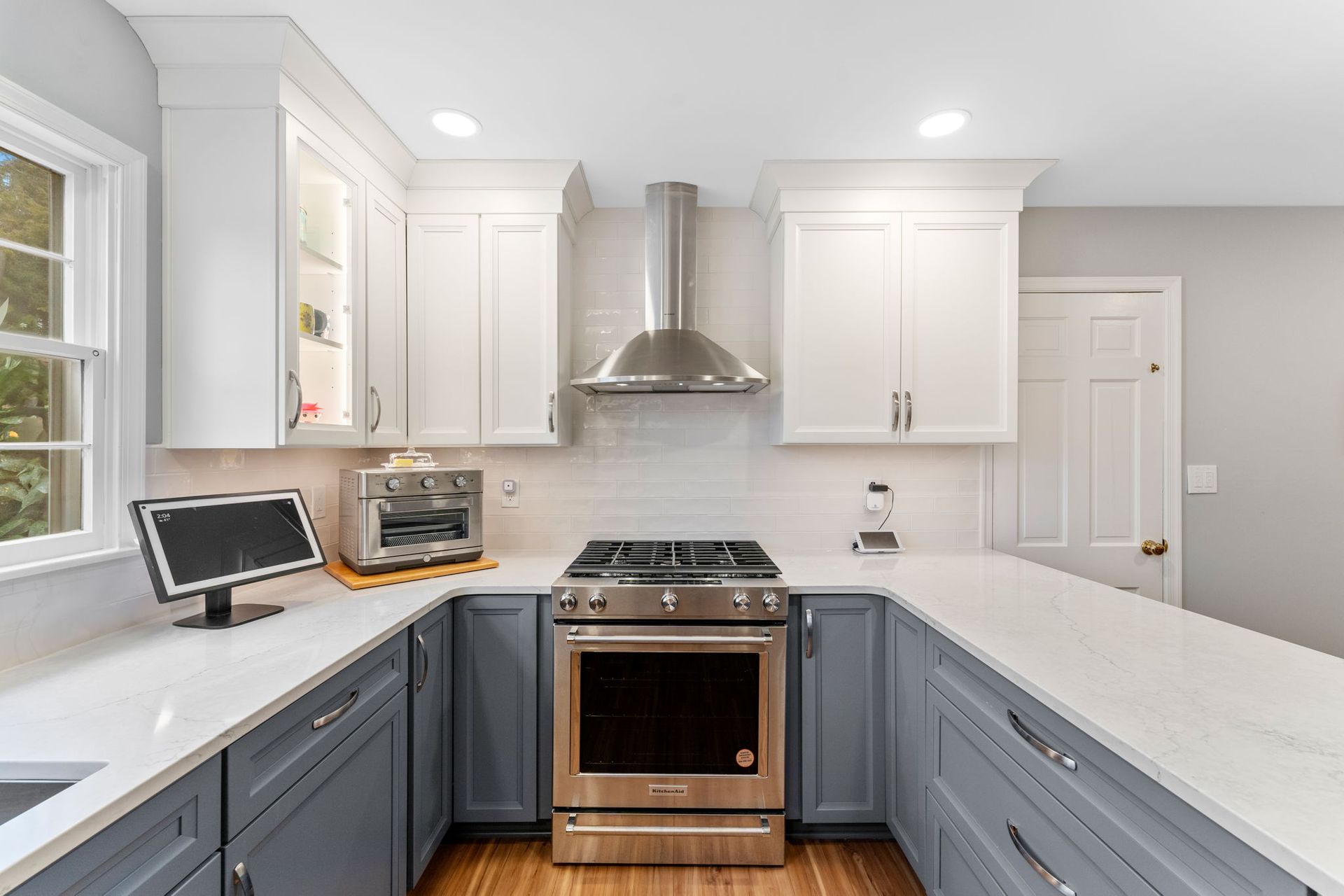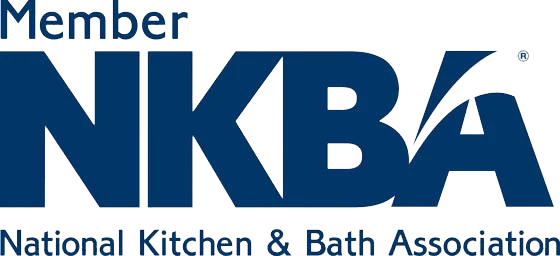How to Mix and Match Cabinet Styles for a Unique Look in Your Bucks County Home
When it comes to designing a kitchen or bathroom, cabinetry is often the focal point of the space. Cabinets serve as both functional and aesthetic elements, setting the tone for the entire room. If you’re a Bucks County homeowner looking to upgrade your space, mixing and matching different cabinet styles is an excellent way to create a distinctive, personalized look. One of the most popular and versatile options for cabinetry is all-plywood construction, which can be finished in both painted or stained designs. This article will explore how to mix and match cabinet styles with an emphasis on all-plywood cabinetry, while also providing insights on how Weiler's Kitchen & Bath Design Center’s in-house designers can help guide the design process to suit your space and style.

Why Choose All-Plywood Cabinets?
Before we dive into the intricacies of mixing and matching cabinet styles, let's take a closer look at why all-plywood cabinets are an excellent choice for your Bucks County home.
- Durability and Strength
All-plywood cabinets are incredibly durable. Unlike other types of cabinetry made from particle board or MDF (medium-density fiberboard), plywood is naturally resistant to moisture, which is particularly important in a kitchen or bathroom setting where humidity levels can fluctuate. The multi-layered structure of plywood also gives it superior strength, ensuring that it holds up well to daily use, heavy loads, and wear and tear over time. As a result, you won’t have to worry about your cabinets sagging or warping after years of use. - Environmental Friendliness
Another advantage of all-plywood cabinets is that they are a more sustainable option compared to solid wood cabinetry. Plywood uses less wood than solid wood, and many manufacturers opt for eco-friendly practices when producing plywood. This makes it an attractive choice for homeowners who are conscious of their environmental impact but still want a beautiful, durable product. - Aesthetic Flexibility
All-plywood cabinets can be finished in a variety of ways. Whether you prefer a rich, natural wood grain through a stained finish or the crisp, clean look of a painted finish, plywood can be customized to match any design style. The smooth, even surface of plywood allows for a flawless paint or stain application, meaning that it’s easier to achieve the exact look you envision. - Affordability
While solid wood cabinetry often comes with a higher price tag, all-plywood cabinets offer a more budget-friendly alternative without sacrificing quality or appearance. This allows homeowners in Bucks County to create a stunning kitchen or bathroom while still sticking to a reasonable budget.
Types of Cabinet Styles to Mix and Match
Before we explore how to mix and match cabinet styles in your home, it’s essential to understand the different cabinet door styles and finishes available. The right combination of these elements will help you create a unique design that complements your space. Here are some of the most common cabinet styles:
- Shaker Style
Shaker cabinets are a classic, popular choice for many homeowners. They feature a simple, clean design with a flat center panel and square edges, making them versatile enough to complement both traditional and contemporary spaces. Their understated elegance makes them perfect for mixing with other styles, and their straightforward design ensures that they won’t overwhelm a room. - Flat-Panel (Slab) Style
Flat-panel or slab doors are characterized by their sleek, smooth surfaces with no decorative framing or paneling. These cabinets are often used in modern or minimalist kitchens, where a clean, streamlined look is desired. Flat-panel cabinets are great for creating contrast when paired with more traditional or ornate cabinet styles. - Traditional Style
Traditional cabinets have a more ornate, detailed look, often with raised panels, decorative moldings, and intricate carvings. These cabinets are perfect for homeowners who want a more classical, formal look in their kitchen or bathroom. When mixed with more modern styles, traditional cabinets can add a sense of richness and sophistication to the design. - Rustic Style
Rustic cabinets emphasize the natural beauty of wood, often featuring a distressed finish and a rough-hewn look. This style is popular in country and farmhouse-inspired kitchens, creating a cozy and inviting atmosphere. Rustic cabinets can be paired with more polished or modern finishes to create a striking juxtaposition of styles. - Contemporary Style
Contemporary cabinets focus on simplicity and clean lines, with minimal decorative elements. They often feature smooth, high-gloss finishes and can be made from a variety of materials, including plywood, metal, or glass. Contemporary cabinets are ideal for modern kitchens that aim for a sleek, elegant look.

Mixing Cabinet Styles for a Unique Look
Now that we’ve covered the different cabinet styles, let’s discuss how to mix and match them to create a distinctive look in your Bucks County home. The key to successful mixing and matching is balance. You want to create contrast without overwhelming the space, so focus on combining different finishes, materials, and cabinet door styles that complement one another.
1. Combine Painted and Stained Finishes
One of the most effective ways to mix and match cabinet styles is by pairing painted and stained finishes. All-plywood cabinets can easily be painted in a variety of colors, or you can choose a natural stain that highlights the grain of the wood. If you prefer a modern or contemporary look, consider painting your upper cabinets in a light, neutral color, like white or soft gray, while staining your lower cabinets in a rich, deep wood tone. This contrast creates visual interest and gives the space depth without being too overpowering.
For a more rustic or farmhouse-inspired look, you could pair stained wood lower cabinets with painted upper cabinets, creating a harmonious yet visually interesting design. Stained wood brings warmth to a kitchen, while painted cabinets keep the design light and fresh.
2. Pair Different Cabinet Door Styles
Mixing different cabinet door styles can add a layer of complexity and interest to your kitchen design. Consider pairing Shaker-style cabinets with flat-panel doors for a fresh, modern twist on a classic look. You could use Shaker-style doors for the base cabinets and flat-panel doors for the upper cabinets, creating a balanced mix of traditional and contemporary elements.
Alternatively, you can pair more ornate, traditional-style cabinets with sleek, minimalist flat-panel cabinets for a bold, modern contrast. This mix works particularly well when using all-plywood cabinets with a painted finish, as it provides a clean, cohesive look.
3. Incorporate Open Shelving
Open shelving is an excellent design element for creating a more relaxed and airy feel in your kitchen. When mixing cabinet styles, open shelving helps break up the heaviness of solid cabinetry while providing a functional space for displaying dishes, glassware, or decorative items. Open shelves work particularly well when paired with all-plywood cabinets, as they allow the natural beauty of the wood to shine through.
For a modern look, you can pair flat-panel or contemporary cabinetry with sleek, open shelving. For a more rustic or farmhouse-inspired kitchen, consider pairing traditional or Shaker-style cabinetry with open shelves made from reclaimed wood for a warm, organic touch.
4. Custom Details and Hardware
To tie everything together, incorporate custom details like decorative trim, crown molding, or unique hardware. These finishing touches can help unify different cabinet styles, creating a more cohesive look. For example, traditional-style cabinets with ornate moldings can be paired with flat-panel cabinets that feature clean, modern hardware. The addition of brass or matte black handles can create an elegant yet contemporary feel.
Adding these custom touches ensures that the different cabinet styles you’ve chosen flow together smoothly, providing a polished and professional look.

New Paragraph








